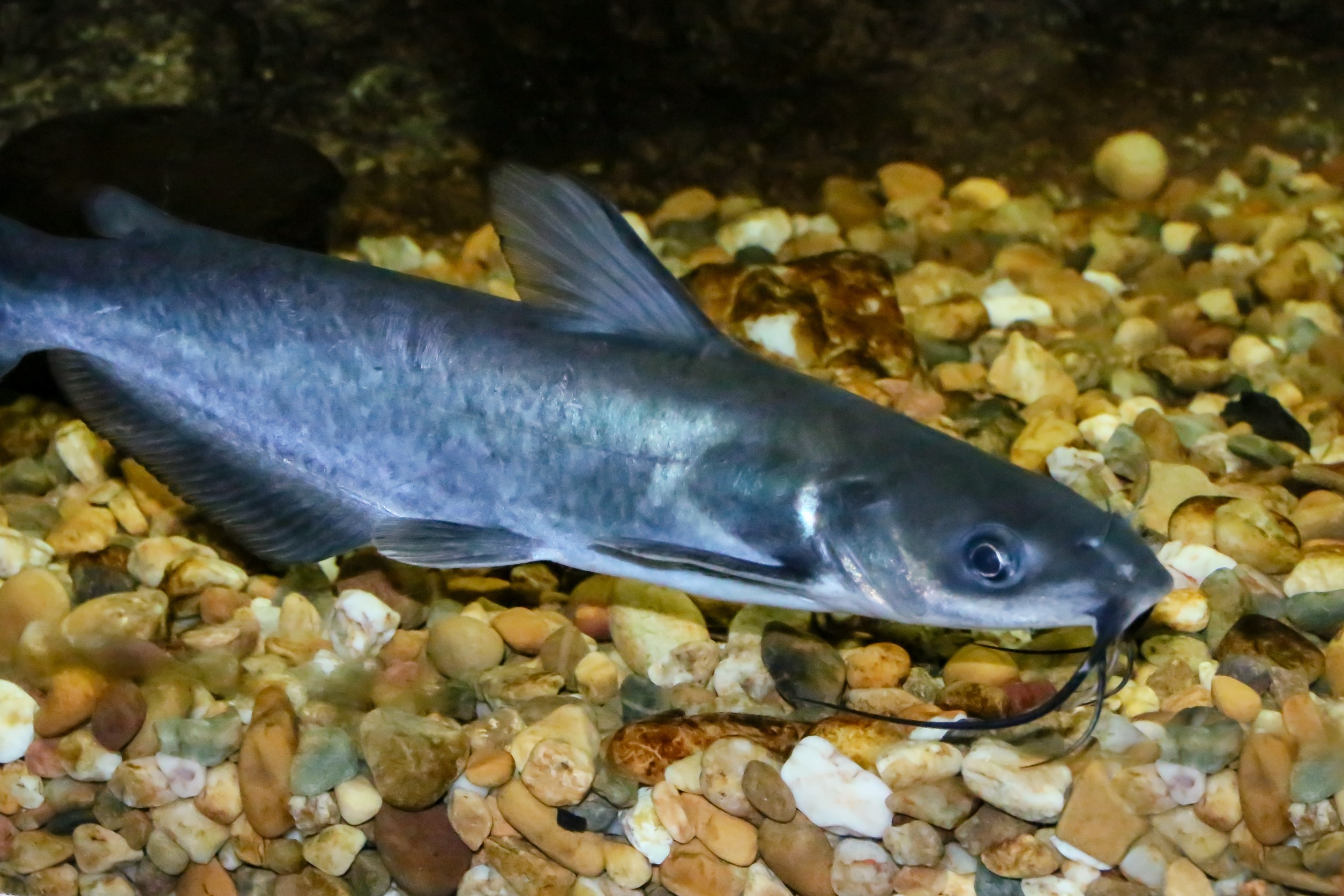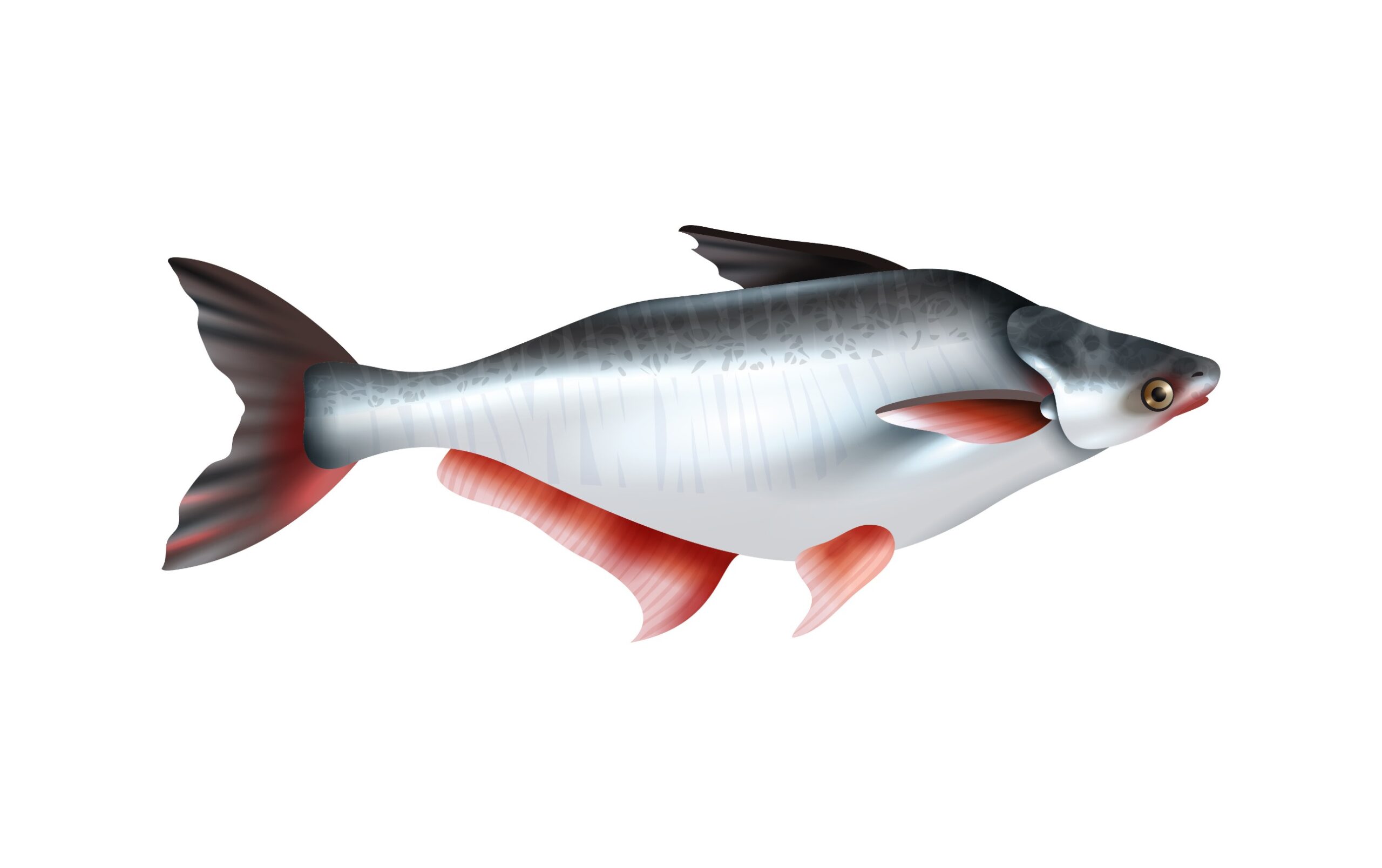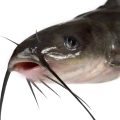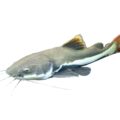Channel catfish and basa catfish look very different because they belong to very different waters. The habitat of channel catfish is usually the United States, while Basa is found in southeast Asia. Of course, there are many more differences as well.
Basa is also a type of catfish and is not a different species. However, when most people think about catfish, they think about channel catfish, which differs.
As you can guess, although they belong to the same family, Basa and channel catfish are miles apart. The channel catfish has the scientific name Ictalurus punctatus, whereas the basa catfish has the scientific name Pangasius court. Both of these fishes are abundant in nature as they are in the least concerned category regarding their conservation status.

The Appearance
The appearance of these two catfishes is very different, even if they have some similarities in belonging to the same family. The most important similarity is their skin, which is scaleless for both fishes, and they have large eyes that work great in the dark.
The channel catfish has a typical body. It is elongated, cylindrical in shape, with two barbels sticking out from either side of the prominent head of the catfish. The catfish also has a prominently forked tail. Its color is greyish blue on the side, white on the bottom, and black on the back. This coloration allows the catfish to hide in every direction. There is also an albino channel catfish with no color and is all white, but it is much rarer to find a channel catfish with this genetic feature.
The basa catfish also has a broad head and thick body, but as the fish grows, its lower body gets more prominent, making it look rounder and more like other typical fish shapes and not cylindrical. The fish also has two barbels on its head and small teeth lining its mouth. The fins of the basa fish are either grey or black. When the fish is juvenile, it has a black stripe along the lateral line and another long black stripe below the lateral line. As the fish grows, it becomes uniformly grey but with silvery sides and a greenish tint depending on the species.
The Size
Since the fish’s environment is different, the size of these catfish is also different. Before that, you need to know that the size of fish depends on individual fish, their diet, environment, and even genes, so the length given below is just an estimation.
Regarding the typical channel catfish, the average size of the fish is 12 inches to 22 inches, and the catfish weighs 10 pounds and 20 pounds on average, and it is very rare to find a channel catfish bigger than this. However, there was a world record for the largest channel catfish caught, 52 inches in size and weighing 58 pounds. Most fishermen expect to catch channel catfish of around 4 pounds because a channel of about 10 pounds is hard to catch. The size also depends on the lifespan, and the longer that the catfish lives, the bigger it will get. On average, it is believed that the channel lives for 15 years in good condition.
Moving on to the basa fish, the maximum length that the fish gets is 47 inches in size. Although, most of the bass fish do not reach that size. Under ideal conditions, the basa fish grows very fast, reaching maximum size within 6 to 8 months. The weight of the naturally caught basa fish has not been recorded, but it will be the same as the channel catfish. Typically, Basa and channel catfish are similarly sized, but the maximum size for Basa is smaller than channel catfish.
The Habitat
Now let us move on to the habitat which is the most different for these two fishes. Both fish are well known in their areas for being very abundant.
The channel catfish is found in the eastern and northern United States, Mexico, and lower Canada; it is a western fish distributed worldwide. The fish was also artificially introduced in countries like the Czech Republic, Romania, Malaysia, and Indonesia. Here the channel catfish flourished as they adapted to the water pretty quickly. Channel catfish is not a sea fish, but a freshwater fish found in lakes, ponds, and large rivers. The channel catfish also love to stay at the bottom of the water with muddy substrate and hide in brush piles, caves beneath the water, and thick underwater vegetation.
The basa catfish is mainly found in Mainland Southeast Asia, namely Vietnam, as they are native to the Mekong and Chao Phraya rivers, which run through several countries in Southeast Asia. These fishes are known by many names in many Western and Asian countries. The habitat of basa fish is similar to channel catfish, as it is also found in freshwater or brackish water in rivers, lakes, and ponds, but the fish is not strictly a bottom-dwelling fish as it comes to the top. It is sent to many Western countries as it is an abundant fish.
The Diet
What the fish does also depends on its habitat and environment. Although these two fishes have similar preferences for water, they live in entirely different countries, which causes their diets to be different.
The channel catfish has taste buds all over its body but are mostly concentrated in their barbels. These barbels allow the fish to find food in dark and murky water at night when there is no fear of predators finding them. The channel catfish is an omnivorous fish that mainly depends on a carnivorous diet as it feeds on fishes such as yellow perch and sunfish and also snails, crustaceans, clams, snakes, frogs, birds, and insects. The channel catfish also feeds on aquatic plants, algae, grains, seeds, and nuts. When the fish is juvenile, it mostly depends on small animals and algae. It is a diet that is easy to eat, but as the fish grows, it becomes more varied, with even some land mammals ending up in their bellies.
Although most catfishes are opportunistic feeders and omnivores, not all, as basa catfish proves, the basa fish is mostly an herbivorous catfish that does not depend on fishes or animals for its diet and only eats algae, aquatic planta, grains, seeds, and nuts. Although, if they do not find what they prefer, the basa fish can also feed on other small fishes and crustaceans. Basa fish is an omnivorous fish, but it mainly has an herbivorous diet due to the availability of these plants in the water. Also, there needs to be more fish in their habitat that the Basa can catch and overpower as it is not a fish that can fight. It can, of course, still, defend itself when the needs come.

The Reproduction Method
The reproduction method for catfish and Basa is also a little different. Both fishes reproduce quickly, so their population is abundant and sometimes considered invasive.
The channel catfish becomes mature at three years of age, and then it spawns when the male channel catfish chases the female, and they swim together. After that, the male releases sperm into the water, and the female releases eggs. The eggs are fertilized outside the female’s body, and then the newly fertilized eggs are taken to the nest already built. The nest is made by either female or male catfish and sometimes by both parents. The nest is in a safe space, away from predators. The fertilization happens at the beginning of spring or summer when the fish needs warmer temperatures before spawning. After that, the male channel catfish protect the egg and the fry until they can take care of themselves.
The basa catfish also reproduces by a similar method. The male and female basa fish swim together. Then the male releases sperm, and the female releases eggs simultaneously. The sperm and the eggs fuse together, and the eggs are then protected in a nest built by one of the parents. The Basa, however, starts spawning at the beginning of the rainy season and moves to the shallow part of the water to do so. During the rainy season, they have the most abundance of food. The basa fry is eaten by various fishes in the water, but most of them can hide and survive.
The Nutritional Composition
Both fish are eaten all over the world. The channel catfish is more famous and commercially sold than Basa, as it is more of a local fish. Regardless, they are both very healthy and tasty fish.
The channel catfish is said to be low in calories. One serving of channel catfish only has 105 calories. It is also packed with nutrients, such as selenium, vitamin B12, phosphorus, thiamine, and potassium. The protein for one serving is 18 grams, and the fat in the fish is around 3 grams. The channel catfish is also high in omega-3 fatty acids and omega-6 fatty acids. Overall, it is a very healthy choice that makes it super famous.
The basa fish is also low in calories. One serving of basa catfish has 158 calories. The fish has 22.5 grams of protein and 7 grams of fat. Just like channel catfish, the Basa is rich in many nutrients, namely vitamin B12 and omega-3 acids. The basa fish also has vitamins and minerals that improve the overall health of humans.
The Taste
The channel catfish and basa fish are delicious fishes that can be cooked in various ways. The skin of catfish is never edible because it is scaling, which makes it super tough, especially after cooking. Not to mention, the skin absorbs a lot of chemicals from the water, mainly if it is wild caught.
The taste of catfish is famous as it is one of the best-tasting fish in North America. The taste is mild with a slight sweetness, but the fish is very moist, which makes it unique. The flesh of the fish is white, and it has larger flakes than some other catfishes. The catfish absorbs flavor and goes well with many different marinades. It is crucial to cook the fish sparingly, which can affect the taste, and it is also important to buy channel catfish that were farm raised. Wild catfish often taste muddy and dirty, which you may not like.
When it comes to Basa, it is a more delicate or softer fish, and it also has a milder taste compared to catfish, so it does not have any fishy taste. This makes this fish very popular among people that do not like the taste of fish. The taste is often said to resemble cod and haddock fish, and the fish also has very few bones, making it ideal for eating. However, some sellers mistakenly label basa fish as swai fish, another catfish, but it has a coarser texture and yellow flesh.
Conclusion
Although channel catfish and basa catfish belong to the same family, they are very distant cousins with very few things in common due to their geographical locations. There is a difference in habitat, appearance, taste, and size.












Pingback: What are the Catfish Species in Arkansas? A Comprehensive Guide | Reel Fishing Guru